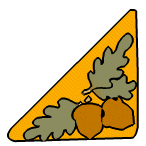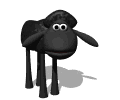HOLY GRAIL FARM


Our Quest to Preserve Rare & Endangered Breeds
Olde English "BabyDoll" Miniature Southdown Sheep
Thanks for visiting! text for more info (801)836-8506/801-898-7360 - See Us on Face Book for pictures and videos NO SALES info can be provided on Face Book E-mail grailgal@hotmail.com






These Sheep are ready to go to work!
It just so happens that one of the things they do best "eating grass and weeds". Is very useful. They have been used successfully in orchards, vineyards and berry farms. Beings that they are not very agile on their short little legs. Can't get up into the crops. See them working on the below video.
It just so happens that one of the things they do best "eating grass and weeds". Is very useful. They have been used successfully in orchards, vineyards and berry farms. Beings that they are not very agile on their short little legs. Can't get up into the crops. See them working on the below video.
See a Sheep being sheared.
How to spin wool on a spinning wheel.
Warning: This can be habit forming
Warning: This can be habit forming
L@@kie how fun and easy it is to do Needle felting
GRAZING VINEYARDS
Holistic approach to vineyard grazing
By Kelly Mulville
closeup of vineyard sheep
Grape farming can be simultaneously more profitable, ecologically resilient and socially responsible than the status quo of both conventional and sustainable practices. Through the synergy of human creativity, ecological principles and holistically sound decision making, viticultural practices can be weaned of the majority of off farm inputs and operate primarily by current solar income.
Spiraling increases in fuel, equipment, labor and fertilizer costs, along with the associated negative impacts to our environment by many of these practices make it imperative for us to find innovative and viable solutions for sustaining agriculture.
Advancing the economic viability and ecological integrity of viticulture will increasingly necessitate the presence and impact of properly managed grazing animals during the growing season of both the cover crop and the vines themselves. Proven stratigies exist to allow grazing throughout the year in many established vineyards and effective solutions have evolved for designing new vineyards conducive to holistically-based management.
The Synergy of Sheep
Results from a 2009 trial conducted in the Alexander Valley demonstrate that managed grazing of sheep in a vineyard through winter, spring and early summer can lead to the following benefits:
• 80%-90% reduction in irrigation use
• Eliminates the need to mow or cultivate under vines and between rows due to the grazing activity of sheep which converts this plant material into fertilizer
• Eliminates the need for hand suckering due to sheep browsing of this growth and converting it into fertilizer
• Sheep can consume all canopy thinnings (laterals and leaves) placed on the ground and convert those into manure
• Improves both yield and quality of fruit
• Reduces reliance on and cost of machinery, fuels, fertilizers, hand labor and herbicides
• Improves soils ability to sequester carbon
• Reduces atmospheric carbon emissions
Holistic approach to vineyard grazing
By Kelly Mulville
closeup of vineyard sheep
Grape farming can be simultaneously more profitable, ecologically resilient and socially responsible than the status quo of both conventional and sustainable practices. Through the synergy of human creativity, ecological principles and holistically sound decision making, viticultural practices can be weaned of the majority of off farm inputs and operate primarily by current solar income.
Spiraling increases in fuel, equipment, labor and fertilizer costs, along with the associated negative impacts to our environment by many of these practices make it imperative for us to find innovative and viable solutions for sustaining agriculture.
Advancing the economic viability and ecological integrity of viticulture will increasingly necessitate the presence and impact of properly managed grazing animals during the growing season of both the cover crop and the vines themselves. Proven stratigies exist to allow grazing throughout the year in many established vineyards and effective solutions have evolved for designing new vineyards conducive to holistically-based management.
The Synergy of Sheep
Results from a 2009 trial conducted in the Alexander Valley demonstrate that managed grazing of sheep in a vineyard through winter, spring and early summer can lead to the following benefits:
• 80%-90% reduction in irrigation use
• Eliminates the need to mow or cultivate under vines and between rows due to the grazing activity of sheep which converts this plant material into fertilizer
• Eliminates the need for hand suckering due to sheep browsing of this growth and converting it into fertilizer
• Sheep can consume all canopy thinnings (laterals and leaves) placed on the ground and convert those into manure
• Improves both yield and quality of fruit
• Reduces reliance on and cost of machinery, fuels, fertilizers, hand labor and herbicides
• Improves soils ability to sequester carbon
• Reduces atmospheric carbon emissions
Legs just long enough to reach the ground and it's a good thing...
Here is what Nathan Griffith's article in "Sheep" magazine writes in his article in "Sheep Magazine" titled Autumn Tricks. He discus's ways to increase your profit. He write's With so little meat on a sheeps lower legs it's remarkable how many tentacle-legged sheep win prizes in shows. Gangly legs could be useful to hold sheep up out of muck slurry piling up in a slovenly-run feed lot. But it is no excuse to have made a tait like that an industry standard in the U.S. Next time you see a sheep promo photo of long leggity beasties," try viewing them with your hand covering up their legs from the knees down. The sheep now has the same size body and legs just long enough to reach the ground.
And it would look like OUR OLDE ENGLISH MINIATURE SOUTHDOWN BABYDOLLS!
Here is what Nathan Griffith's article in "Sheep" magazine writes in his article in "Sheep Magazine" titled Autumn Tricks. He discus's ways to increase your profit. He write's With so little meat on a sheeps lower legs it's remarkable how many tentacle-legged sheep win prizes in shows. Gangly legs could be useful to hold sheep up out of muck slurry piling up in a slovenly-run feed lot. But it is no excuse to have made a tait like that an industry standard in the U.S. Next time you see a sheep promo photo of long leggity beasties," try viewing them with your hand covering up their legs from the knees down. The sheep now has the same size body and legs just long enough to reach the ground.
And it would look like OUR OLDE ENGLISH MINIATURE SOUTHDOWN BABYDOLLS!






















